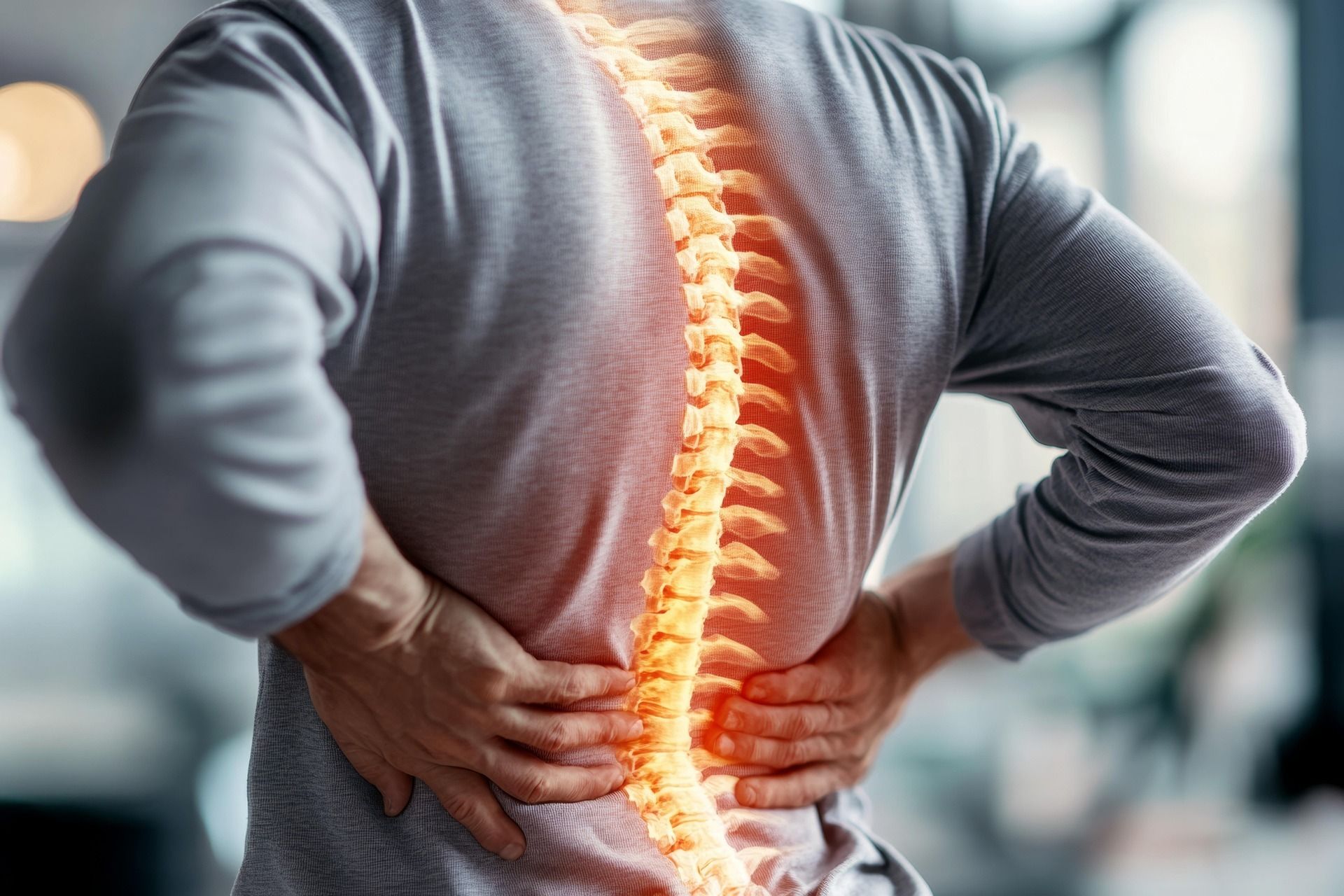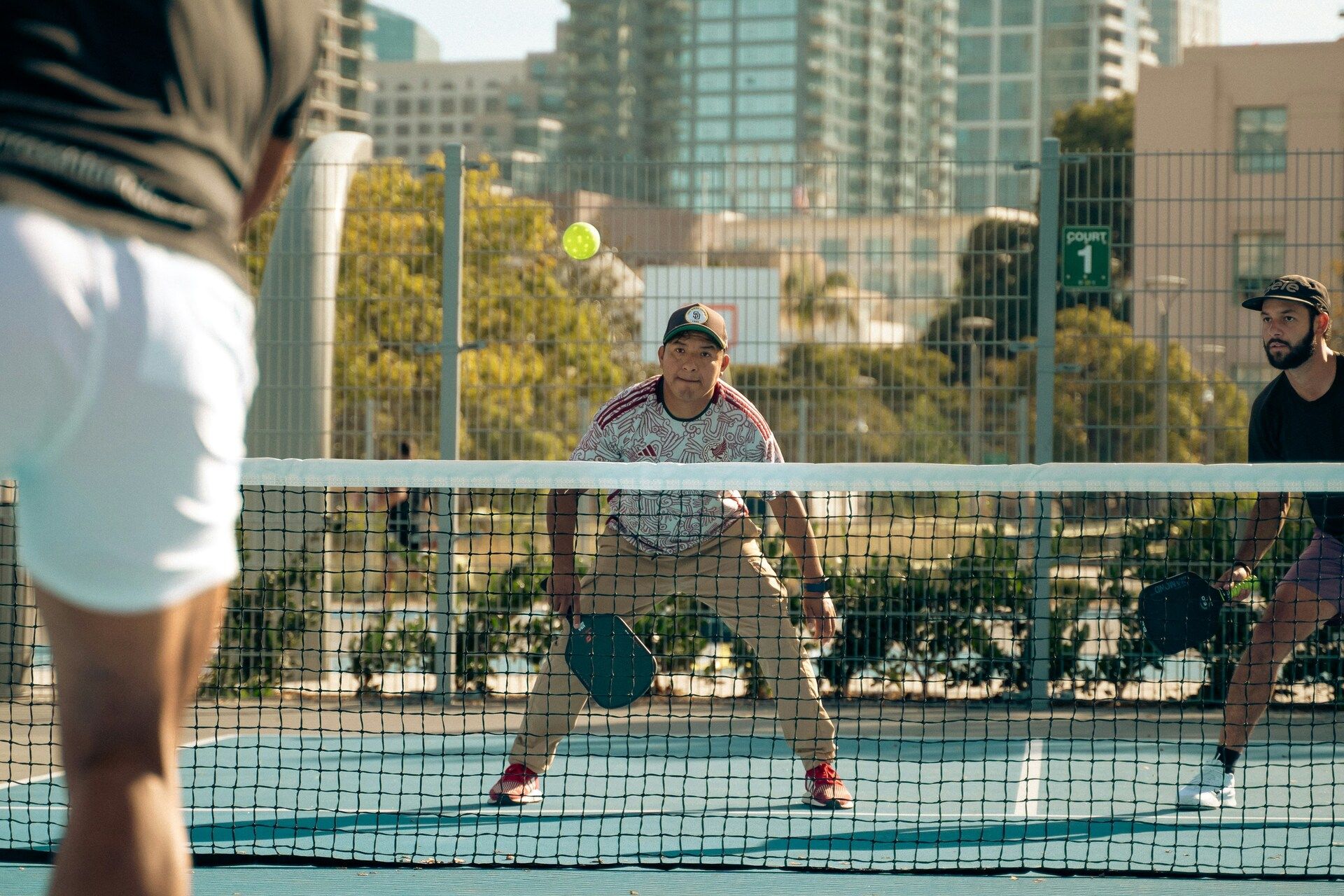Your lower back absorbs more punishment on the pickleball court than you might realize. Between bending for those low third shots, sudden direction changes, and stretching for wide returns, it's the complaint I hear most from players hitting their 30s and beyond.
In this issue:
We'll examine what's actually happening to your back during play and identify the mechanical tweaks that prevent soreness before it starts.
Then we'll dive into smart court positioning, so you're already where the ball is going instead of lunging and overreaching for every point.
Better body mechanics combined with tactical awareness means less wear on your joints and more confidence in your game. Let's dive in.

The Pickleball Back Problem: Why It Happens and How to Fix It
If your lower back aches after a few games, you're not alone. Back pain is one of the most common complaints I hear from recreational players, and most of the time it isn't caused by a single bad swing. It's the result of repeated stress on a part of your body that wasn't built to absorb it.
Here's why it happens, what to watch for, and how to keep your back healthy on the court.
Why Pickleball Challenges Your Lower Back
Pickleball seems gentle on the body at first glance. The court is small. The movements are quick and short. But the biomechanics tell a different story.
Your spine faces several unique challenges during play:
Frequent bending for low balls puts your back into a flexed, compromised position
Twisting from awkward positions loads the lumbar discs unevenly
Sudden stops and starts create compressive forces your spine has to absorb
Overreaching for wide shots pulls your center of mass off balance, stressing stabilizing muscles
Add in modern desk posture, weak core muscles, and stiff hips, and your lower back ends up doing far more work than it should.
The Most Common Pickleball Back Issues
1. Lumbar Strain
Overstretching or microtears in the small stabilizing muscles of the lower back. This leads to soreness, stiffness, and difficulty bending or twisting.
2. Facet Joint Irritation
Repetitive extension and rotation can irritate the small joints in your spine, causing sharp pain during certain movements.
3. Disc Stress (Non-Herniated)
Excessive flexion and compression can inflame the discs between your vertebrae. This creates diffuse aching or sciatica-like symptoms if a nerve gets irritated.
4. Sacroiliac (SI) Joint Dysfunction
Poor hip mobility forces the SI joints at the base of the spine to compensate, resulting in localized pain with twisting or weight shifts.
Warning Signs You Shouldn't Ignore
Stiffness or pain in your lower back after playing, especially the next morning
Sharp pain with bending, twisting, or reaching for shots
Pain radiating down the leg (seek medical advice if this happens)
Needing to stand up straight or stretch frequently during games to relieve discomfort
How to Protect Your Back
1. Build Core and Hip Strength
Your core and hips should absorb most of the load. Add planks, side planks, and hip bridges to your weekly routine.
2. Improve Hip Mobility
Tight hips force your spine to compensate. Hip openers and thoracic rotation drills can restore natural movement patterns.
3. Stay Balanced on the Court
Avoid overreaching for wide shots by improving your footwork and court positioning (see Article 2).
4. Warm Up Before Play
Gentle cat-cow stretches, standing twists, and dynamic lunges prepare your spine for rotational demands.
5. Listen to Pain Signals
Don't play through sharp or radiating pain. Early intervention keeps minor issues from becoming chronic.
Pickleball is meant to be fun, not punishing. Take care of your back now and it will take care of you later.

Court Positioning 101: How to Stop Overreaching and Take Control
If you're constantly lunging for wide balls or backpedaling awkwardly to chase lobs, you're not just giving up easy points. You're putting extra stress on your back, knees, and shoulders.
Good court positioning isn't about covering every inch of space. It's about anticipating, moving efficiently, and making your opponents work harder than you do.
Here's how to stay balanced and in control.
Why Positioning Matters
Pickleball rewards players who move smart, not just fast. Poor positioning creates a cascade of problems:
Overreaching for wide shots puts your back and shoulders at risk
Backpedaling for lobs increases the chance of falls or hyperextension injuries
Wasted movement leaves you out of position for the next shot
Better positioning reduces physical strain and gives you more time to execute cleaner shots.
Core Positioning Principles
1. Stay Balanced and Centered
After every shot, recover to a position where you can cover both sides equally
Avoid drifting toward the sidelines unless you're deliberately setting up an angle
2. Watch Your Opponent's Paddle
The paddle face gives clues about where the ball is going. Reading it early allows you to take small, efficient steps instead of last-second lunges.
3. Anticipate, Don't React
Think one shot ahead. If you just hit a deep cross-court, be ready to move diagonally forward to cover a soft return.
4. Move as a Unit in Doubles
Stay connected to your partner with an imaginary string between your hips. If they move left, you move left. This prevents gaps and reduces scrambling.
Stop Backpedaling for Lobs
One of the most dangerous habits in pickleball is stepping backward to chase a lob. Instead:
Turn and run: Pivot your hips, use a crossover step (turning sideways and stepping across your body), and move with your whole body
Communicate in doubles: Decide ahead of time who takes overheads and call for help early
Smarter Positioning = Smarter Play
Efficient movement isn't just easier on your body. It also helps you conserve energy and apply pressure. When you're in the right place at the right time, you control the rally and reduce the need for heroic saves.
Next Steps
Combine these positioning tips with the back-friendly warm-ups and mobility work from Article 1 to keep your game sharp and your joints healthy.
Wrapping it up
Smarter mechanics and smarter movement go hand in hand. Protecting your back isn't just about stretching, it's about staying balanced on the court and moving efficiently.
Before you go, I'd love your input: When would you prefer to get this newsletter in your inbox? Take 10 seconds to answer this quick poll and help me pick the timing that works best for you.
See you next week,
Boris.
What time of day do you prefer to read your newsletters?
Disclaimer: This newsletter is for educational and informational purposes only and does not constitute medical advice. The content is not intended to be a substitute for professional medical advice, diagnosis, or treatment. Always seek the advice of your physician or other qualified health provider with any questions you may have regarding a medical condition. Never disregard professional medical advice or delay seeking it because of something you have read in this newsletter.
